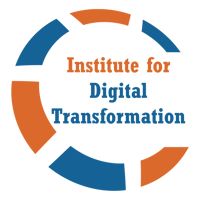Ever since Google and social media changed the nature of how people obtain information, there has been a siren call for “Content Marketing.”
The logic is simple. Produce interesting content and publish it on your site and Google will reward you with eyeballs. If readers like what they see, they’ll share it via their social platform of choice and you’ll get even more eyeballs. Ideally they’ll sign up to receive information from you, giving you the right to market to them, eventually converting readers into paying customers.
There are a few variations of this tried-and-true formula, but that’s the gist of it. And to a certain degree, it works.
Great content will beget eyeballs and social shares. But converting those eyeballs into customers is the much trickier part and where organizations often miss the mark.
Not all content is created equal. Not even all good content is created equal. And that’s because while content may be about “marketing” it is about a lot more than just eyeballs. In fact, there are three things that great content does that is actually much more important than just the eyeballs it may bring. These are the REAL reasons you should be investing in great content.
REAL Reason #1: Positions Your Brand in the Market
The first thing to understand is that while content may be a part of your strategy to generate awareness and bring people to your site via organic traffic, etc., it will also be one of the very first things that potential customers will look at – regardless of how they came to interact with you. No matter the initial encounter, the first place they are going to look to get an idea of the type of company you represent will be your website and your content.
If there is no content, then that alone will tell them a lot. No content means that you’re old school and/or just don’t care.
If you do have content, it will tell your potential customers how you see yourself in the market. Is your content mostly “marketing fluff”? Is it very hands-on and pragmatic? Is it strategic and presenting a view of the future? Marketing fluff is going to position you only a notch above those without any content. But beyond that, the content you produce and share will have a great impact on how your customers see you in the marketplace.
Hands-on and pragmatic content conveys that your product is a “work horse”. Strategic and future looking content communicates that your product helps the leaders of the organization find their way into that future. It implies that your product is progressive, strategic – and probably not for everyone. There is nothing wrong with either of these approaches (or the various degrees in between), but you need to be very cognizant of the type of content you are producing and sharing – because it sets the tone for how your brand will be perceived in the marketplace.
REAL Reason #2: Creates Trust
Content is a powerful enabler of something much more than merely securing eyeballs. Used properly, it can be wildly effective at creating trust between your potential customer and your brand long before they ever interact live with anyone from your organization. Great content will actually begin a relationship with your potential customer.
In order for content to have this effect, it must communicate a magic elixir of expertise, confidence and vulnerability. It is the combination of these three elements that give great content the power to establish trust in your brand – and you need all three of them, in equal measures for this to work.
Expertise: You need to communicate to your potential customers that you have the depth of experience and expertise to help them solve their problems. Your content must be well researched, well written and must address the challenges that are facing your customers right now and in the near future.
Confidence: You don’t need to be “selling” in every piece of content. You should be willing to share valuable and meaningful information in your content – not just bits of “teaser” information. By sharing the “real stuff”, you communicate that there is so much more “behind the curtain” and that you are unafraid of giving away really meaningful and valuable information.
Vulnerability: When it comes to content, being vulnerable means that you’re willing to be transparent about the real issues facing your industry and to address not only your solution’s glowing benefits, but also to honestly address their potential shortcomings. Be willing to acknowledge that your product may not solve all problems or be the answer for everyone. This authenticity is the last part of the magic elixir that cements the trust between you and your potential customers.
REAL Reason #3: Brings Your Brand to Life
In our always on, “going 100mph all the time” world, brands are becoming more and more homogenized. The world of B2B marketing has become increasingly polished and finessed. Whether you’re a startup or a well-established tech player, the odds are that you have a very slick, very ‘put together’ marketing pitch that communicates business benefits and what differentiates you in the market.
But whether we recognize it or not, and even in this technology-powered time, people still fundamentally purchase from those they like. It’s why a great sales rep can be so effective. The seeds for that relationship are sown long before those interactions, through the content that you present. And this is why it is so important that your content present the “personality of your brand.”
You probably want some mix of personality, but the point is to recognize that the type of content you publish and share will shape the view of your organizational personality in the eyes of your potential customers and will bring your brand to life in their eyes.
The Big Take Away: Produce Content with Intent
The big message is that not all content is created equal and that it is not enough to simply produce content. Content should have a meaningful impact on your marketing objectives. Great content is produced with the intent to properly position your organization in the market place. It is produced to create trust and the beginning of your relationship with your customer before you actually interact with them. And it presents the personality of your organization. That’s the real power of great content.
About the Author:








